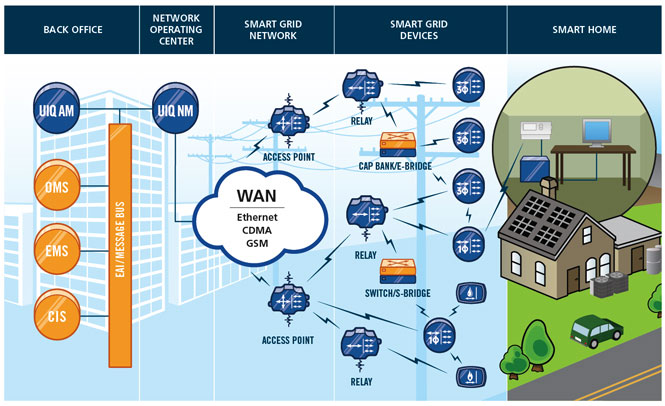There is little doubt of the impact that our increasing electricity usage has on the environment and to utility bills. Often, electrical companies are stretched thin when many consumers are drawing power at the same time (peak demand) and often rely on additional fossil fuels to assure this demand is met without issues. The advancement of IT systems has allowed the growth of the “smart grid” that links information and electrical infrastructures to optimize energy loads across the grid.
With the new technology, companies are able to receive live data transmitted from smart meters on homes and can regulate demand more smoothly. Better links in the grid allow for home owners to feed power back to the company when possible. For example, a battery storage source could be brought online if connected to the grid at home and then recharged at lower demand times. This possibility has become even more appealing to electric car owners who are even starting to receive reduced rates in some areas to charge their car at night and allow energy providers to use their stored battery during peak demand loads.

The smart grid also makes home power generation through solar panels or windmills more attractive with the possibility of selling additional power back to the grid. These features allow for better demand management of electrical power and show how new, live information can lead to great efficiency.
The smart grid is a blend between efficient software and IT. In this case, programming methods and algorithms are used efficiently to perfectly match demand and need. New technology provides the physical backbone. Green software can be seen as one of the constituent parts of green IT. It harnesses the power of information technologies and uses it for the benefit of being more green.
One company which provides smart grid solutions is Cisco. It has grid architecture blocks that allow the building of such a smart grid. For energy companies like RWE or UK Power Networks these products are an interesting business value proposition to optimize their power networks. They get to benefit from:
- Reduced production costs. Energy can be stored locally more easily and end-users can input power into the network. This reduces the requirement to run expensive power plants. Therefore production costs are reduced.
- Less power dissipation. There is less energy dissipated as energy can be produced and stored locally and therefore has less travel distance. It is known that power is lost easily through long distance power grids. Overproduction of energy to compensate for dissipation therefore drops and revenues increase.
- Demand can be matched more closely. Prediction patterns can be traced to very high details through software similar to that developed by the University of Iowa. This allows correct calibration of energy production and yields the same benefits as above.
The real benefits of this technology however reach the end consumers and businesses. They can save energy costs by up to 25% and therefore have great interest in this technology.
In general though, the smart grid is a novel green technology benefiting businesses and consumers at the same time.
Stay tuned! Make sure to follow us on Twitter and Facebook for the latest updates.
No comments:
Post a Comment